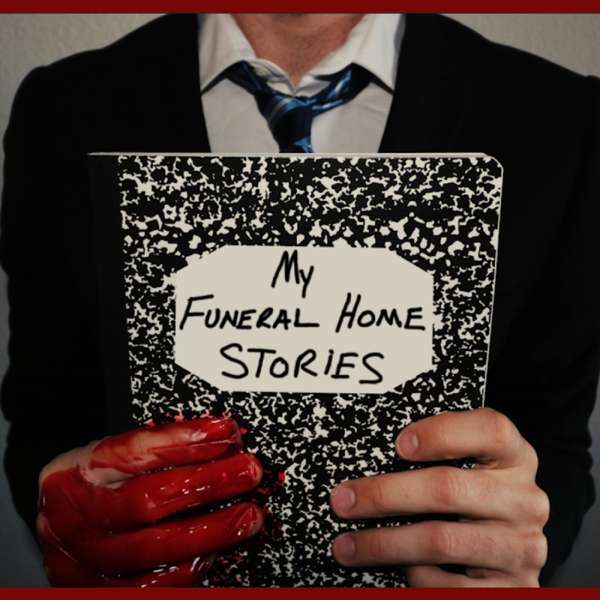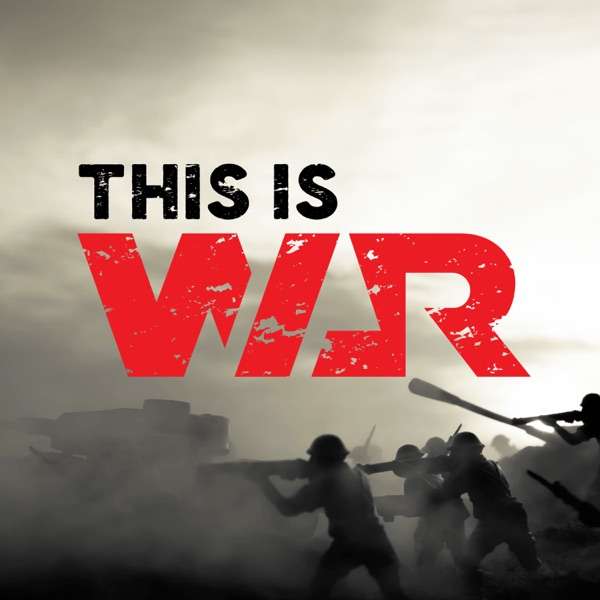Explore Our Services
Episode Summary
In Episode 02, Adam Winston sits down with historian Mark Derr to trace the journey of dogs in North America—from their arrival with Indigenous peoples as pack animals and spiritual companions, through colonial conquests and presidential preferences, to their service and suffering in global conflicts. We explore unique native breeds like the Salish Wool Dog, the foxhounds of Washington versus the herders of Jefferson, and the ethical complexities of war dogs in WWII, the Iraq War, and modern society.
Read on for key takeaways, resource links, and the full transcript.
Key Takeaways
- Indigenous communities in North America relied on dogs as pack animals, hunting assistants, and spiritual companions, often burying them with their owners.
- Spanish colonists weaponized dogs to brutalize Native peoples, a practice that led New England settlers to shun militarized dogs until the Seminole Wars.
- Presidential preferences for dogs reflect their priorities: George Washington’s passion for foxhounds versus Thomas Jefferson’s affinity for herding breeds.
- Military use of dogs in Nazi concentration camps and at Abu Ghraib raises enduring ethical questions about deploying animals in warfare.
- Today’s off-leash restrictions, record high dog ownership (70+ million in the U.S.), and shifting attitudes toward risk underscore an evolving human–dog relationship—and a potential societal backlash against dogs as fads fade.
Resources & Links
Episode Transcript
Show Transcript
Part 1: Dogs and Indigenous North America
MARK DERR: DOGS AND HISTORY
This will be another three-part episode. First, we’re going to learn about how dogs arrived to North America, their role in colonial history, and then forward in time to the 20th and 21st century. I posted lots of research links to the show notes at dogsinourworld.com.
Part 1
Mark: The main thing about history is that we learn it, so that we try to avoid re-peating it. By repeat it, I mean that we repeat the themes of history more than the actions of the people who formed them.
Mark was just describing the theme of today’s show. This guy blows my mind every time I have the privilege of learning from him. You may have seen Mark on PBS, A&E, and the Discovery Channel. You can also read his stuff in the New York Times, Atlantic Monthly, and Smithsonian Magazine among many others. To me, he’s like the Gandalf of dog experts. If mother nature was actually a wise and no-nonsense dude in Miami Beach—she would be Mark Derr.
Mark: I’m interested in the human connection to the natural and built world. Dogs I’m into, because they are a mediator between us. Dogs are interesting, because of their ubiquity in the world. They’re useful as companions and workers. If that makes sense to anyone…good. If not, you need a dog.
In the first episode, we talked about the history of wolves and their transformation into dogs. In today’s show, we’re going to primarily focus on the history of dogs in North America. Then, onto the New World and through present day.
In order to set the stage and give us a starting point, I asked Mark to explain how we first got dogs in North America.
Mark: It’s long been assumed they came across the bearing straight. After the ice melt. Whether that’s true, I don’t know. That may change with genetic evidence, but I think they would have come with the first people.
Adam: And what kind of dogs were these?
Mark: They were probably wolf-like dogs as most were at the time. They became more wolf-like as they proceeded down the continent, I assume. Because, people lose them and need to replenish them. So, they bred with wolves for some time after the dog came into existence. We might call them dog-wolves, or dog-like, whichever.
Native Americans were the first people to begin using dogs in North America. I have often said that dogs make me feel closer to both God and mother nature. That hard-to-define spiritual bond with a companion dog was also likely felt by some of the earliest peoples in America.
Derr: It depends from culture to culture. We know from burials that they had an important place in society [and with] important people. [Dogs were] assumed to serve as guides to the land of the dead. Sometimes, dogs were sacrificed or died at the same time [as their owners]. [In order to] help them navigate to the new kingdom.
The first dogs in North America also served as hunting dogs. Little dogs were used to bay, or control the movement of elk. Larger dogs helped native Americans hunt bear and wildcats. They were even used to hunt otters and other aquatic prey. There was the Salish Wool dog here in what is now the Pacific Northwest. These dogs were bred in isolation on an island by the Coast Salish Peoples. The dogs’ coats were made into fabric and clothing and they were bred on the island in order to preserve the Salish Wool Dog bloodline. Is it possible that the Salish Peoples were the first dog groomers? Here’s Mark, again—
Mark: It was their role in carrying packs that allowed them to go into the New World with people. I think that one can’t deny that. You can travel much further and faster with dogs than with your own two feet. When they came into being they were used pretty much as they are now. That is, they were used to drag along their own packs and people. Lash two poles and you can carry a lot of things.
If only things could stay this harmonious and lovely. Unfortunately, if you remember from our recent interview with Erik from Wolf Haven—soon the Europeans arrive.
Part 2: Colonial Conquests & Presidential Dogs
Part 2
In Part 1, Mark Derr explained how dogs first arrived to the North American continent and were soon used by some early Native American cultures. He claimed it was the dogs’ ability to serve as a pack animal—by “pack animal” I mean they carried stuff—that allowed them to enter the New World with humans.
Now, I want to begin Part Two by talking about the dogs who ‘probably came with Columbus. Dogs were ubiquitous on these voyages. They had a number of types of dogs in Spain—herding and livestock. Their primary function for the Spaniards was to terrorize and brutalize and kill the Native Americans to great aplomb. Since there aren’t many natives left where the Spaniards were, it’s a very sad part of American history that dogs were used in that way. But what it did do was keep dogs from being militarized for a long period of time—basically, until WWII.
Adam: What do you mean by that?
Mark: The Spanish use of dogs to brutalize people was so offensive to many colonists in New England—who otherwise weren’t offended by much—that they would not use dogs for that purpose. In fact, the one time dogs were enlisted was during the Seminole Indian Wars of the 19th century, when Congress mandated that some Cuban bloodhounds be brought to Florida to hunt Indians. One of the chief opponents of this was John Quincy Adams’s son—whose dad became president.
The U.S. presidents before and after John Adams also greatly valued their collection of dogs. Here’s what Mark says about the different purposes Washington and Jefferson had for their dogs.
Mark: Well, Washington was a major lover of dogs and breeder of foxhounds, because fox hunting was his passion. He kept close tabs on his dogs. Sometimes he’d loan them out to people. He had some little dogs, but foxhounds were his main thing.
At one point he wrote to Ireland—he used his extensive contacts to not only request dogs, but also play politics. He requested wolfhounds, because he wanted them on his plantations. This was right at the end of the 18th century. He was told that there were no more wolfhounds in Ireland, since the wolves had been extirpated from the British Isles about 50–100 years earlier. So his correspondent offered him a well-bred mastiff as a guard dog instead of a wolfhound. Of course, that wasn’t very acceptable to Washington.
Thomas Jefferson, on the other hand, was into herding dogs. He brought some back from France with him.
I find it fascinating that George Washington was more into dogs who could hunt fox and kill wolves, while Thomas Jefferson was into herding dogs. Dare I say, a more peaceful purpose for a dog. I don’t know. I go back to thinking about how often dogs can be a reflection of their owner.
If you’re interested in learning more about these presidents and their relationship with dogs, I highly recommend you check out Mark Derr’s book A Dog’s History of America. I’m currently in the middle of it and can’t wait to finish. Then I’m moving on to his other books before I read anything else. I have links to some of his books and articles in the show notes at dogsinourworld.com.
Coming up, in the final part of the show, Mark is going to fly the time machine forward and remind us of some historical events in the 20th and 21st century that have affected the dogs in our world.
Part 3: War Dogs & Modern Society
Part 3
It can be tough. But, sometimes we’ve got to get our hands a little dirty as we sift through time in order to be on the right side of history. Remember, as Mark Derr said at the beginning of this show, we need to learn about history in order to avoid repeating some of it. I went down some deep, dark Internet rabbit holes in order to relay this story to you. Again, I’m sparing you the details, but we need to talk about some stuff. Here’s Mark taking us up to the 20th century and beginning Part 3 with the gritty history of one of my favorite dog breeds…
Mark: “[General George S.] Patton had a bull terrier that went around with him. Pit bulls—the Staffordshire terrier as it’s known—were fighting dogs. But fighting dogs were not viewed the way they are now.”
“I’ll skip past some of those details I was talking about…”
Mark: “Let’s just say it’s a blood sport, and most people in this country do not seem bothered by blood sports. You used to be able to get the rules for constructing your fighting pit up until the 1930s when the last one was published. The United Kennel Club was founded in part to register fighting dogs, and to have them was not considered as disgusting as it is now.”
“It’s important to note that just because pit bulls were used for blood sport, that doesn’t mean pit bulls are predisposed to vicious behavior. We should always respect an animal’s capability, but there’s a reason why we can have these dogs in our homes.”
Mark: “Most dogs are pretty nice if you raise them properly. But if you want to abuse dogs and make them mean and vicious, then that’s what you do.”
“An even harder-to-stomach form of abuse was happening in Nazi concentration camps and witnessed by some US soldiers. Again, if you’re the kind of person who can handle a rabbit hole, some of my Internet research can be found in the show notes at dogsinourworld.com.”
Mark: “In WWII, the Germans used dogs in the concentration camps to keep prisoners in line and sometimes to maul them and kill them. It was well known. When the Allies liberated Dachau they promptly killed all the guards and dogs they found there. It was an act of vengeance, sure. It was definitely—probably—a war crime. It was to correct an even more egregious act which was the killing of six million Jews and other people.”
“Now, whether you think it was a war crime that US soldiers committed, or you’re about to wave the red, white, and blue—let’s not forget about a military prison that existed during my years in the service.”
Mark: “During the Iraq War, dogs were routinely turned on prisoners in Abu Ghraib. It was a big scandal, in fact. I believe they were army dogs that were turned on prisoners. And the Navy handlers—I may be getting this backwards, so don’t quote me—but anyways, the handlers for one branch turned their dogs on prisoners, and the others flatly refused, because the dogs weren’t trained to be used against humans that way.”
Me: “I’m going to have to look that up.”
Mark: “You can find the Abu Ghraib report. It hasn’t been suppressed yet. I might have it somewhere.”
“I did look it up. In 2006, the Los Angeles Times reported that Army Sergeant Santos A. Cardona was the 11th soldier convicted of crimes stemming from the abuse of Abu Ghraib inmates between 2003–2004. He was acquitted of the most heinous charges, which included unlawfully using his K-9 to bite an inmate and conspiring with another dog handler to frighten prisoners so badly that they soiled themselves. It’s rumored that it was a game among some of the K-9 handlers and intelligence officials within the prison.”
“In 2006, the New York Times reported that another K-9 handler, Army Sergeant Michael J. Smith, was also found guilty of crimes at the prison. CBS News mentioned Sergeant Smith in a 2006 story that quoted him saying to the jury, ‘soldiers are not supposed to be soft and cuddly.’ Smith was found guilty on 13 counts. In March 2010, the military’s highest court upheld Smith’s convictions.”
“Whew. Okay. Don’t worry—that’s the worst of it. But we did it. I feel it had to be done. Not only is it important to know history, but we also need to look to the future. As we come near the end of this episode, let’s think about the dogs in our world going forward.”
Adam: “Do you have a moral opinion on the use of dogs for military purposes?”
Mark: “I have moral opinions about the military use of dogs for military purposes. I think we’re long past the time where we should have wars of any sort. I don’t think dogs should be used as offensive weapons against people for any reason. That’s not why they exist. That’s why the Spaniards did it, and it was nasty business. The people up in North Dakota just had dogs turned on them in a very heinous fashion.”
Mark: “Those involved in the civil rights movement will remember dogs turned on them time and again. That’s not what dogs are for and should never be used for. The dogs used to protect the president perform a central function and are not used as offensive weapons against people. They shouldn’t be, anyway.”
“There’s definitely one big difference between the dogs from the New World and the ones now in our present-day world…”
Mark: “I came of age walking dogs off leash across college campus and through town and everything else. Now you couldn’t do that without someone complaining or busting you with a ticket.”
Adam: “What has changed?”
Mark: “Well, partly the mentality of people towards risk. There are a lot of people today who won’t let their kid play outside with or without a dog. It’s just a different world where people don’t go out and do things much anymore. Or, part of it is also numbers. There are so many dogs and people who don’t really try to control their dogs.”
“Looking to the future, Mark makes an ominous prediction about the large increase in the number of companion dogs in America.”
Mark: “It wasn’t too many years ago that you might have estimates that were 40–50 million dogs. Now there are 70+ million in the US alone. I fear there’s going to be a backlash against dogs, because dogs are a fad now. Fads have a tendency of disappearing.”
“Do you see where I’m going with all this? Mark has been trying to teach me that dogs are, and always have been, what we make them. We may not know exactly how they ended up in our world, but the great He or She obviously allowed dogs to be a bridge to something greater.”
“I still believe that our personal—and societal—relationship with dogs can often reflect our relationship with God or Mother Nature. I’m not doing Mr. Derr justice in this show. Whether you have a dog or not, I highly recommend you check out Mark’s work.”
Adam: “What are some great resources for any of us who want to learn more about dogs and history?”
Mark: “Well, my first book is about the dog–human relationship; that’s called Dogs’ Best Friend. My second book is A Dog’s History of America, which is about the role of dogs in American history. It does a pretty good job, I think, of covering the territory.”
“I interviewed Mark the week President Donald Trump was elected.”
Adam: “If Trump is going to get a dog, what kind of dog do you hope he ends up with?”
Mark: “I wouldn’t even make a suggestion. I would hope they didn’t get a dog. I would think that he wouldn’t want a dog, because the man is such a narcissist that he wouldn’t be able to share his attention with it.”
Me: “Are you going to let me air that?”
Mark: “Sure.”
That’s a wrap. It is so exciting to know that many people in the United States and other countries enjoy listening to this podcast. Once again, there are some very special people I couldn’t have done this without. Thank you to Dave Elkins for generously donating most of the music you hear in the show. Thank you to Mark Padgett for the production and technical assistance.
I can’t stop working on this project—it’s become a second job. I need to figure out a way to continue affording this show. Please, make a donation at dogsinourworld.com to help me cover the never-ending production expenses.
If you can’t afford a donation, could you tell two people about Dogs in Our World? Or leave a comment in places like iTunes or Google Play so other people can find us when using a search engine.
Next month, we’ll meet with author, professor, and philosopher Steven Hales and examine how dogs can help us better understand that big, elusive topic called Philosophy. Until then, I’ll see you at dogsinourworld.com.
Stay Connected
If you enjoyed this episode:
Ready to Elevate a Dog’s World?
Book Adam

 Our TOPPODCAST Picks
Our TOPPODCAST Picks  Stay Connected
Stay Connected







